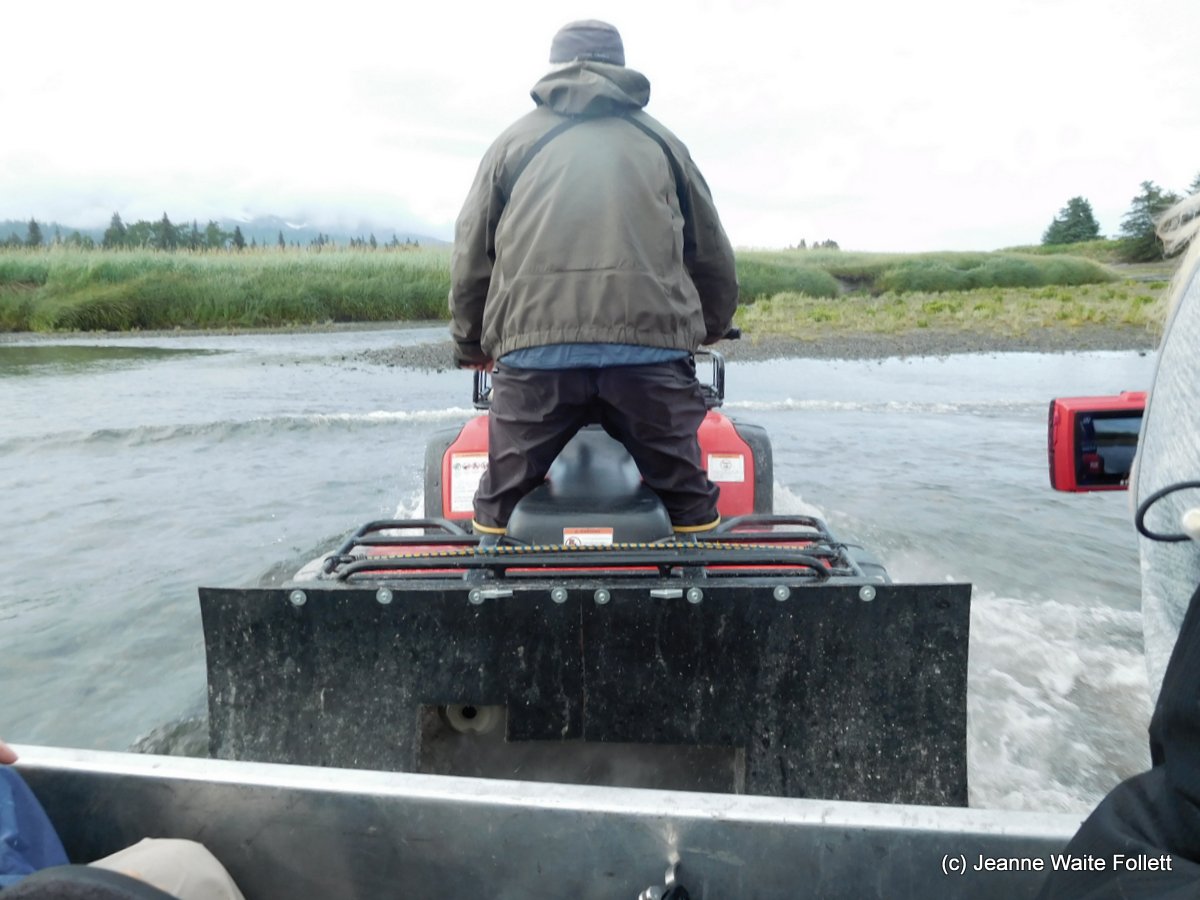In which we mind our bear manners and reap the results
Over
the past half century, the Coastal brown bears that inhabit certain places on the western shores
of Cook Inlet have somehow reached an accord with humans, one that allows
predators and prey to coexist in a tenuous peace. Of all the places to experience this habituation phenomenon, Silver Salmon Creek is perhaps the best.
Farther
south on the Alaska Peninsula, groups of spectators and photographers stand on
a wooden platform at Brooks River falls in Katmai National Park and Preserve to
watch dozens of huge bears stand in the rushing water and snatch salmon out of mid-air
as they try to leap over the falls to get to their spawning grounds. While the bears can fish 24 hours a day, the humans have a time limit for their time on the platform.
At
McNeil State Wild Game refuge, entrance is by lottery to limit the number of
people watching bears fish.
Seventy-four brown bears were seen in one day at the river.
Silver
Salmon Creek is farther north, in Lake Clark National Park, established in
1980. Since then, generations of Coastal
brown bears have become habituated to humans.
It’s taken time, but today’s bears don’t view humans as a source of food
or harm, as long as the humans mind their “bear manners.”
***
Bear manners come very much into play one morning while we wait for the high tide to recede.
We’re
in the cabin getting ready for Rick to pick us up soon. Suddenly someone says there’s a bear in the
yard. We scramble for cameras and go
outside carefully and quietly.
 |
| This shows the entrance door to our cabin, the deck under which the skiff is stored, and the spruce tree at right where the cubs are high in the branches. |
 |
| Cabin at left, spruce tree with cubs in center, and two airplanes at right. The salt marsh is beyond the spruce. |
A
young sow has sent her two first season cubs up a tree near the cabin and she heads directly to our cabin where a skiff is stored under a second floor
deck. The others line up to watch her
while I go back into the cabin to my bedroom window.
 |
| One of the cubs sits on a branch in the spruce tree. In the previous photo, they are in the spruce tree at right. |
There
she is, lying on the ground behind the skiff, not ten feet from my
bedroom.
It
seems even mama bears like to play. She
rolls around on her back, moving so quickly I can’t keep her in focus with my
little Nikon Coolpix point and shoot.
She chews on the log supporting the skiff.
She
rubs her face on it.
She sits up a couple times to see what the humans are doing. They are all lined up with
cameras and tripods and clicking away whenever she raises her head. Staying in a quiet group and not invading the
bear’s personal space are essential bear manners. As I’m inside the cabin shooting through a
salt water-misted pane of glass, I don’t think the bear is aware of me being so
close. If she is, she never glances my
way.
With
her cubs in the tree, the sow ambles across the yard, crosses the
still wet ATV trail, and goes into the salt marsh where the nutritious sedge
grasses grow.
I expect her to browse,
but she doesn’t. She watches carefully,
and apparently content that all is well with humans and cubs, she continues her
brief “adult only” recess.
By
this time, Rick has arrived and finds us all enthralled with the unfolding
drama in our yard. He immediately takes charge and shows us
where to stand to photograph the sow in the field.
I leave the group to return to the cabin on some now-forgotten errand. I am heading back across the yard to rejoin the group when the sow
walks right past Rick’s group and in my direction.
I back up against one of the airplanes, trying to make my mass appear much larger. Then I hold my breath as she nears.
I back up against one of the airplanes, trying to make my mass appear much larger. Then I hold my breath as she nears.
 |
(To be continued....)


































